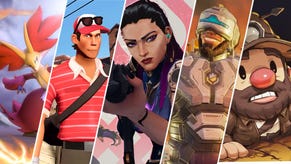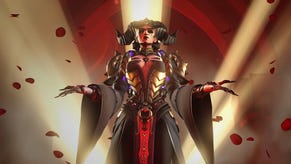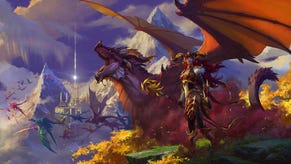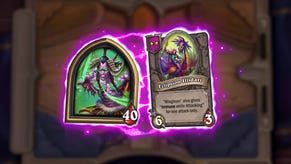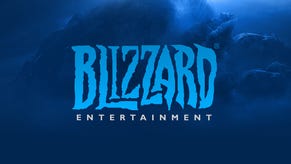Inside Hearthstone's Surprisingly Chill Pro Scene
Whatever expectations you have about esports, Hearthstone breaks the mold.
This article first appeared on USgamer, a partner publication of VG247. Some content, such as this article, has been migrated to VG247 for posterity after USgamer's closure - but it has not been edited or further vetted by the VG247 team.
The difference between Hearthstone and any other esport is made clear the moment anyone sets foot in one of the tavern-themed arenas set up to host major Hearthstone competitions. Instead of investing in a high-intensity esports stadium to host games like for Overwatch or Riot Games' League of Legends, Blizzard designs their touring Hearthstone venues like actual taverns, complete with long wooden tables in lieu of bleachers. Seeing a Hearthstone game in one of these makeshift, Tolkienesque taverns—made all the more impressive for this year's World Championships thanks to its location in a historic palace—is almost like an amusement park. Like visiting a Medieval Times, but not lame (the jury is still out on whether it's nerdier).
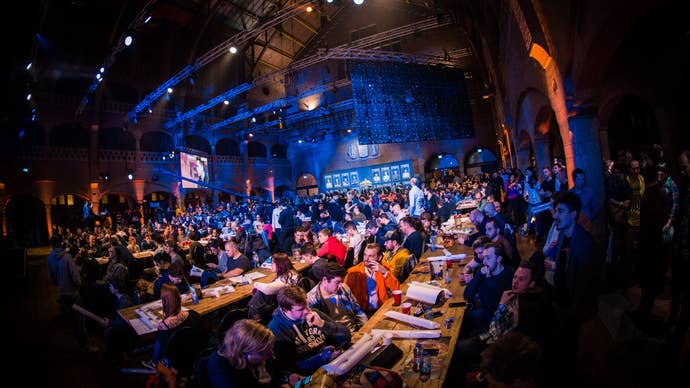
Hearthstone may boast a player base of over 70 million players, but the Hearthstone esports community is decidedly smaller and more close-knit. I was told as much by Blizzard when I arrived in the Beurs van Berlage, a 19th century stock exchange turned tournament venue for the 2017 Hearthstone World Championships in Amsterdam, Netherlands. It's where I was invited last month to learn more about where the state of Hearthstone's esports scene is going in 2018.
There, I spoke with Che Chou, Blizzard's head of Hearthstone esports, who tells me that the foundations for where the esport is going has already been laid out in 2017. The future, he directs, is here in Amsterdam, a long way from home. It's here, where the world finals are taking place for the first time in Europe and not in the game's traditional venue of BlizzCon in Anaheim, California. Amsterdam functions as one of the new goals for Blizzard's Hearthstone ambitions in 2018, which is to take Hearthstone across the globe and bring the game directly to its most hardcore fans. All while simultaneously investing in talent that can deliver the intense games that keep fans mesmerized, and highlighting the organic storylines that develop in any healthy sports scene that keeps fans compelled.
"What we learned throughout the course of three championships and three different [locations is that] that live events are important and audiences are important," says Chou. "Moreover, I think as you start to do more and more [esports events] you start to build a subcommunity. Within the 70 million fans that are playing Hearthstone, you start to build a subcommunity that's dedicated to esports and competitive Hearthstone."
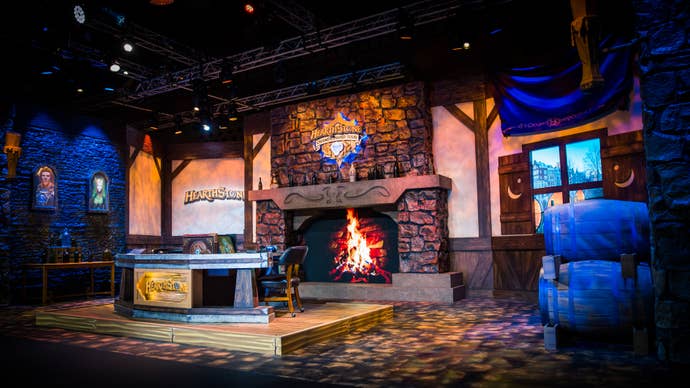
That specific attention to Hearthstone's "subcommunity" is evident in the re-creations of the Hearthstone taverns for major events, but is only part of what Chou is talking about for competitive Hearthstone. The esports fandom for Hearthstone is different from fans of the base game and goes beyond just looking out for which new cards are coming in the latest expansion or those completing in-game daily quests. For esports fans, it's about the meta, or the competitive deck builds that get played at high-level competitions. It's also about the personalities that populate the esport. Not only the players, but the buzzy fandom that's developed around all levels of Hearthstone's esports spectacle too, including developers like game director Ben Brode and shoutcasters (an industry term for announcer) like Dan "Frodan" Chou and Brian Kibler.
Che Chou tells me that fans really resonate with the personal stories of many of the game's top players and personalities (a separate category of Hearthstone entertainers, though the line certainly blurs), and Blizzard is going to be investing more into the compelling storylines the company can unearth in the coming seasons.
Like Blizzard's decision to host the finals in Europe, that emphasis on storytelling was already in place by the time we arrived in Amsterdam. "Coming into this world championship, we built a Europe story for players," explains Chou. "[In Europe, there are] lots of dominant old-school guys in the scene like Kolento, [the Ukrainian wunderkind staging a comeback at this year's finals]."
Stories like Kolento's tend to rise naturally. At this year's World Championships, almost half the finalists were fielded from European countries. When I arrived, the analysis from casters, players, and pundits this year pitched a big homecoming for European players, who finally have a chance to bring home the world championship on home soil. Even as that storyline fell apart as all the European players were taken out before the semi-finals, that in and of itself contributed to an altogether new and exciting tale of how Europe as a region wiped early on home turf.

Some of the narratives that arise in the Hearthstone pro-scene almost make it too easy for Blizzard. Julien "DocPwn" Bachand, for example, is a Canadian finalist this year and the oldest guy in a group of mostly young twentysomethings (Bachand is 32). It's a fact that's highlighted by the casters but downplayed by Bachand, who rightly insists that he's not that old. But that wizened image goes well with Bachand's past as a pro-chess player, whose pivot to a modern esport like Hearthstone gives him a certain cool, a certain je ne sais quois as he might say in his native Quebecois-French.
Blizzard is making sure that there are more stories like Bachand's going forward. In December of last year, Blizzard announced the Masters program, a new initiative among a host of new changes coming to competitive Hearthstone. The Masters program, simply put, rewards consistently top placing players with invites to playoffs as well as offering appearance bonuses so that truly competitive players can actually devote more time to the game, and be financially compensated for their efforts.
"Through this system we're recognizing consistent performance over time," says Chou. "You start to get a group of players that are showing up consistently based on performance. And also the audience can expect, 'hey I really like Player X, [and] now this player is showing up at tour stops and I can follow them around constantly as they tour the world.'" While I can't imagine every player that comes up through the Masters program to have some crazy backstory, the logic is that with a more reliable and consistent roster of top players, Blizzard can devote more attention to individuals that play at the highest level of Hearthstone.
Hearthstone, like any good sport, is personality driven at all levels of the game. The game's director Ben Brode is a larger-than-life character whose raps and booming voice has garnered its own fans. Meanwhile shoutcasters are their own popular personalities, like Dan "Frodan" Chou, who's a fashionista in the world of Hearthstone with his dazzling live appearances donning flashy suits and dyed hair.
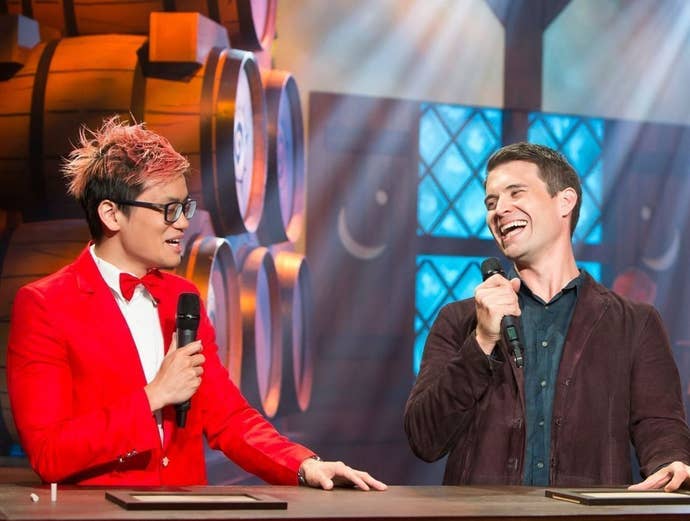
Brian Kibler is another popular caster of the game, having cut his teeth in the competitive Magic: The Gathering circuits back in the 90s, and after going into card game development himself. After a long absence, Kibler emerged again once Hearthstone took off. With his good looks and mastery of the game, Kibler often streams Hearthstone to his own fans, and his relationship with competitive Hearthstone pays dividends.
While touring the main area of the Beurs van Berlage Hall, I speak with Peter and Wilma, a married couple from Slovakia. Peter, an avid competitive Hearthstone watcher and player says he'd love to come to more live events if they're held in Europe, though he has a clause: "if my wife lets me." His wife Wilma is only an occasional player of the game. They both agree however that along with meeting players, it'd be nice if they had more opportunities to meet the casters as well. "[Like] Kibler," adds Wilma, enthusiastically.
The personalities feel like friends, the players are familiar, and they both contribute to the game's greatest strength: its accessibility. Faran and Dave, two recently engaged Hearthstone fans from the U.K. say that the education they receive from watching competitive games keeps them coming back to Hearthstone's esports scene. "Nothing captures me like Hearthstone," says Faran. "In Hearthstone you can take those skills on ladder and play and have the exact same opportunity as a pro is having," adds Dave.
My conversation with Dave, Faran, Peter, and Wilma is the same kind of passion Chou describes as exclusive to Hearthstone's esport subcommunity, something he says is really cool to see built from the ground-up, "as an organic result of [Blizzard] building these storylines, building momentum with these players, and building household names with these players." If Hearthstone can leverage an even broader cast of champions from diverse backgrounds, there's a sense that Hearthstone could field a roster of players unlike any in other esports.
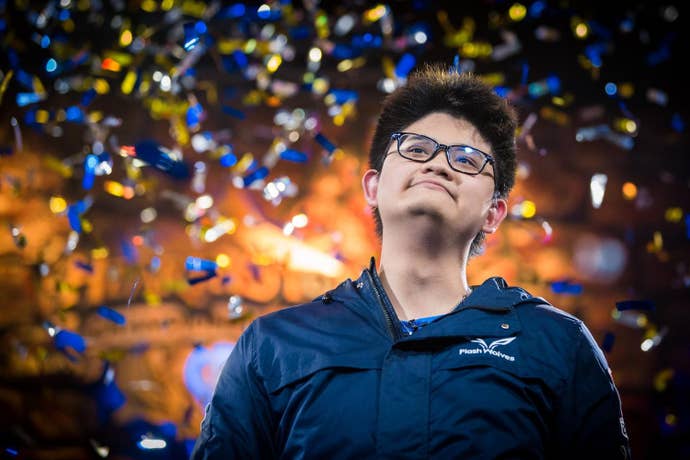
After five days in the heart of Hearthstone, speaking with both fans and Blizzard employees, it's easy to see how Hearthstone stands apart from Blizzard's other esport offerings. Whereas the homebound Blizzard Arena is a hyper-modern stadium buzzing with the kind of restless energy I grew up around attending StarCraft games in Seoul, South Korea; the Hearthstone World Championships are designed to create a much warmer space. The Hearthstone stage is a portal to another world, existing in a pocket universe where the cozy fantasy world of Hearthstone and high-octane esports collide.
For full disclosure: Blizzard funded the trip to the World Championships.

